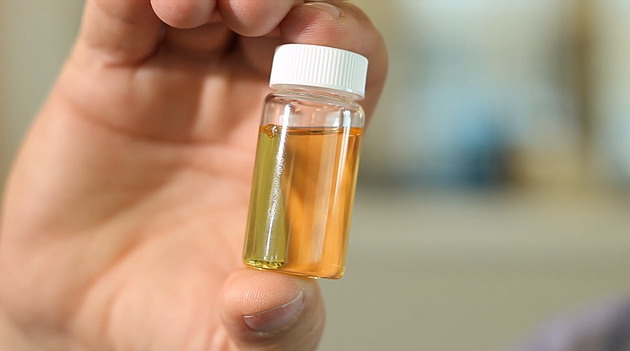Pros And Cons Of Biodiesel

Is biodiesel an alternative to diesel fuel? Being produced mainly from organic waste materials, biodiesel could become a viable replacement for diesel fuel produced from petroleum.
What is Biodiesel?
Biodiesel is a fuel produced from natural organic resources and considered an alternative to fuels produced from petroleum.
Biodiesel is produced today usingnas feedstock the following organic resources: vegetable oils, animal fats and cooking oil, which is also used mixed with diesel fuel to lower the emissions.
Unlike ethanol, biodiesel can be used in pure form in modified diesel engines or mixed with a small percentage of diesel fuel in all diesel engines with similar performance, but lowering the level of harmful emissions released into the atmosphere.
How is Biodiesel Made?
High quality biodiesel is the alternative fuel that is safe to use in every diesel engine to lower the emissions and its production involves a very accurate high-tech process.
The production of biodiesel starts with feedstock such as vegetable oils (soybean oil, inedible corn oil), waste animal fats or used cooking oil.
The Pretreatment Process
This process involves the removal of the impurities contained by the feedstock through a refining process.
The Transesterification Process
The refined feedstock is then blended with alcohol in the presence of a catalyst chemical to produce methyl esters (which is the chemical name for biodiesel) and glycerine.
Glycerine is a by-product that is removed from the production process of the biodiesel and is sent to the chemical industry to produce soap and other products.
After the removal of the glycerine the methyl esters are washed and the remaining methanol is removed.
The Purification Process
Purification is crucial in the manufacturing process of the biodiesel because without obtaining a high quality biodiesel, this alternative fuel cannot be used in all the diesel engines on the market.
During the purification phase all the remaining impurities and particles are removed from the methyl esters to get a high-quality biodiesel.
After the purification process, the biodiesel is tested following the ASTM D6751 standards.
A number of 20 different tests are performed to evaluate the quality and the performance of the fuel and all of the test results are documented into a report called Biodiesel Certificate of Analysis.
A high-quality biodiesel will usually exceed industry standards.
Pros of Biodiesel
Being an alternative fuel that can lower the emissions of a vehicle using a diesel engine, biodiesel has more advantages than disadvantages.
1. Biodiesel Production Uses Cheap Feedstock
The feedstock used to produce biodiesel is based on vegetable oil, waste animal fats and used cooking oil, which are all cheap products because they represent waste materials.
Waste vegetable oils represent a good and affordable feedstock for the production of biodiesel.
Waste animal fats produced by the meat industry represent a low-cost feedstock for biodiesel production.
Used Cooking Oils (UCOs) are oils and fats that have been used for frying or cooking in the food processing industry, fast foods, restaurants and also in households and they represent very good and free feedstock for biodiesel manufacturing.
2. Is a Clean Fuel
Biodiesel is made from vegetable oils, from used cooking oil and from animal fats, which means that the feedstock used to produce this alternative fuel is made of natural resources (with vegetable and animal origins)
Regular diesel fuel is made from a fossil fuel called oil, which means that is not clean.
EPA released in February 2010, the Renewable Fuel Standards Program Regulatory Impact Analysis, which mentions that the biodiesel made of animal fats can reduce the level of emissions by 86%, while the biodiesel produced from soy or rape oil reduces the level of emissions by 57%.
There are a few blends of biodiesel and conventional diesel fuel, which can be found today on the market:
B2 is a mix of 2% biodiesel and 98% regular diesel fuel.
B5 is a mix of 5% biodiesel and 95% regular diesel fuel.
B20 is a mix of 20% biodiesel and 80% regular diesel fuel.
B100 is pure biodiesel.
Blends like B2, B5 and up to B20 can be used today by diesel engines without or with small changes made to the engine.
There are car manufacturers that will not extend warranty coverage, if the equipment is damaged by such blends between biodiesel and regular diesel fuel.
To use B100, which is biodiesel in its pure form, the diesel engine needs to have certain changes to avoid any maintenance or performance issues.
However, the level of harmful emissions will be reduced by more than 50% compared to regular diesel fuel.
3. Can Reduce the Level of Air Pollution Released by Diesel Engines
Cars that use regular diesel to run release harmful emissions into the atmosphere such as carbon monoxide (CO), hydrocarbons, nitrogen oxides (NOx), particulate matter and carbon dioxide (CO2), while a vehicle that uses biodiesel or a blend of biodiesel will generate less nitrogen oxides (NOx) and particulate matter.
The CO2 released will enter back in the carbon cycle and will not affect the quality of the air that much.

Oilseed rape used for biodiesel production, image source: pixabay.com
4. Can be used in many applications
Today, biodiesel has become a clean fuel used in many applications such as powering different engines and also as a source of heating.
- Is used by vehicles with diesel engines: there are different mixes of biodiesel and regular diesel (petrodiesel) used today in the vehicles with diesel engines.
- Is used by the railways: starting with 2007, the historic Mount Washington Cog Railway is using its first biodiesel locomotive along with the all-steam locomotive fleet.
- Is used by aircrafts: several commercial flights have already used different blends of kerosene (petroleum-derived jet fuel) and solajet (which is an algal-derived jet fuel).
- Is used as heating fuel: ASTM 396 recognizes blends of up to 5% biodiesel and 95% pure petroleum heating oil, but there are many consumers that use up to 20% biodiesel in their heating fuel mix.
- Is used to clean oil spills: an oil spill, usually require a shoreline cleanup, which can be done in a cost-effective way by using biodiesel.
- Is used in diesel generators: to lower the amount of particulate matter, nitrogen oxides (NOx) and sulfur emissions released by diesel generators in residential areas, schools and hospitals, the fuel used is B100, which is pure biodiesel.
Biodiesel can significantly dissolve crude oil due to its methyl ester component, and after removing oil from the shoreline, the mixture of oil and biodiesel will be manually removed from the surface of the water using skimmers.
Any remaining mixture of oil and biodiesel will be broken down easily due to the fact that biodiesel degrades in nature pretty fast.
5. Biodiesel Brings Economic Benefits
Biodiesel is an alternative fuel that protects the environment and brings economic benefits to the country.
Being produced from cheap feedstock such as waste animal fats, vegetable oil and used cooking oil, biodiesel has become a clean fuel used worldwide that can replace expensive oil products.
Cons of Biodiesel
Like any other source of energy, biodiesel has a few disadvantages.
1. Using Biodiesel Slightly Reduces the Efficiency of the Engine
EPA studied the effects of the use of biodiesel blends in diesel engines, and announced that using B20 (20% biodiesel and 80% regular diesel fuel) in a diesel engine will reduce the efficiency of the engine between 1 and 2%.
Blends containing higher concentrations of biodiesel will reduce the efficiency of the engine further more.
2. Biodiesel is More Expensive than Regular Diesel Fuel
Pure biodiesel (B100) and the other blends of biodiesel are more expensive than regular diesel fuel due to the fast rising prices of the feedstock.
Vegetable oil is not a waste material and the price of rapeseeds, soybeans, palm and jatropha trees can increase the production costs of biodiesel.
3. Biodiesel is Not Very Suited For Use in Low Temperatures
If the temperature drops below a certain point, some molecules in the biodiesel will aggregate to form crystals.
The fuel becomes cloudy when the crystals are becoming larger than the cloud point (CP), which means that they are larger than one quarter of the wavelengths of visible light.
If the temperature drops more, the crystals in the biodiesel will become larger in diameter.
The cold filter plugging point (CFPP) is considered the lowest temperature at which fuel can pass through a 45 micrometre filter.
If the temperature drops even more, the crystals will become so large that the biodiesel will become gel and after that will become solid.
B100 (pure biodiesel) starts to become gel at different temperatures depending on the mix of esters.
Biodiesel can turn into a gel under certain temperature conditions
Biodiesel produced from canola seed (RME), starts to become gel at at about −10 °C (14 °F), while biodiesel produced from beef fats becomes gel at 16 °C (61 °F) and biodiesel produced from palm oil becomes a gel at a temperature about 13 °C (55 °F).
However, there are several additives that can significantly lower the pour point and the cold filter plugging point (CFPP) of the pure biodiesel (B100).
Using biodiesel as fuel in the winter season is possible if mixed with low sulfur diesel fuel for vehicles, and with kerosene diesel for planes.
4. A Higher Concentration of Biodiesel in the Blend Can Damage Some Parts of the Engine
Even if most automakers approve to use blends such as B2 and B5, while others approve blends up to B20 for their diesel engines, by using a blend that contains a higher concentration of biodiesel in the fuel than the one approved by the automaker could damage (over time) the engine, and could cancel the manufacturer’s warranty for that vehicle.
Conclusion
Biodiesel is an alternative fuel made of waste materials (vegetable oil, animal fats and used cooking oil), which is used to lower the level of harmful emissions released into the atmosphere by a diesel engine.
Almost all diesel engines present in our vehicles today were created to burn petrodiesel (diesel fuel produced from oil), and not biodiesel.
This is the reason why is not safe to use more than B5 in our diesel engines or in some cases more than B20, and this is also the reason why the engine could be damaged by a higher volume of biodiesel in the fuel.
If we want to use biodiesel safely and benefit from all its advantages, we need engines that are built to use biodiesel because only this way we can reduce by more than 50% the level of harmful emissions released into the atmosphere by our diesel vehicles.







